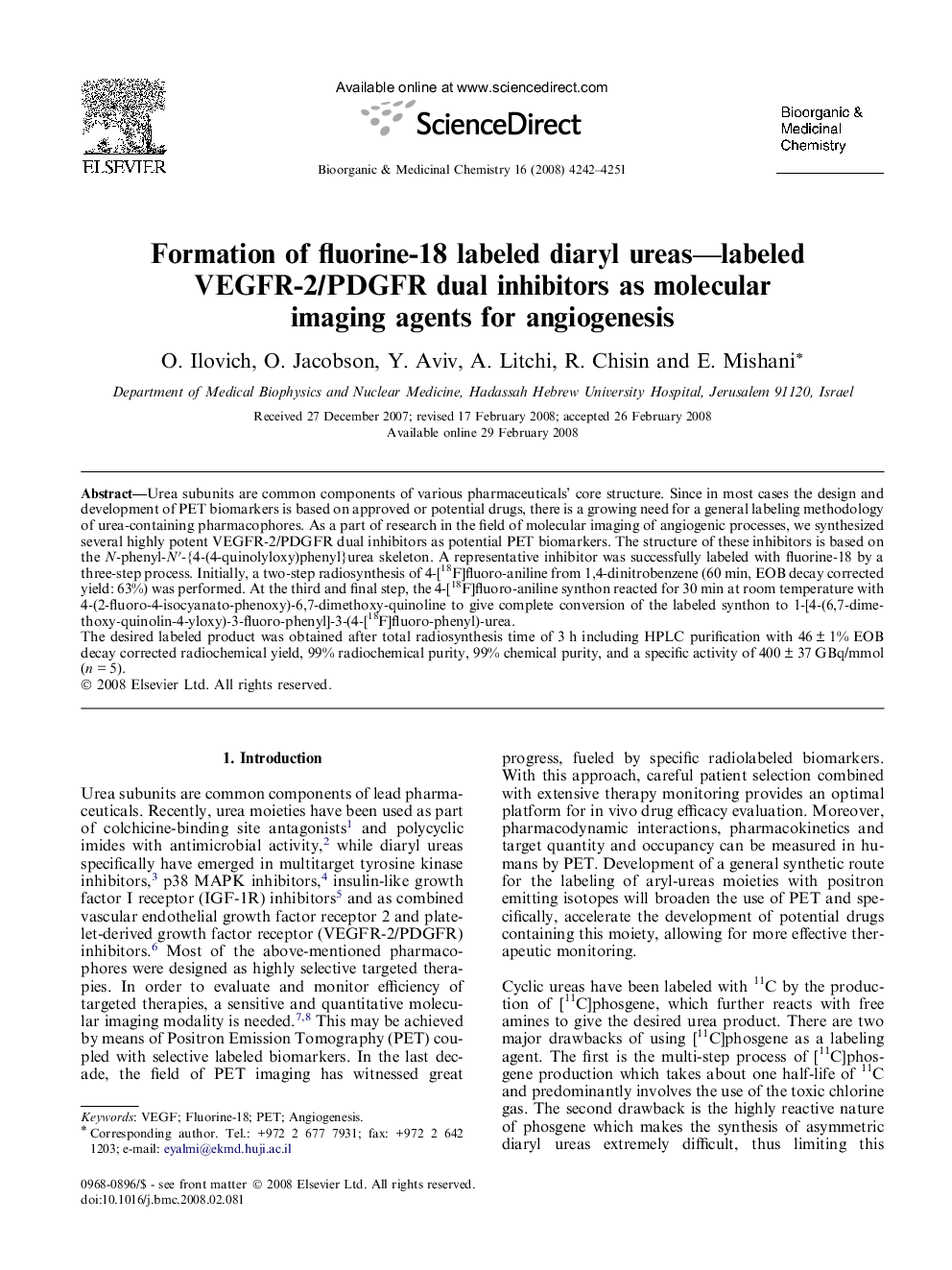| کد مقاله | کد نشریه | سال انتشار | مقاله انگلیسی | نسخه تمام متن |
|---|---|---|---|---|
| 1361519 | 981466 | 2008 | 10 صفحه PDF | دانلود رایگان |

Urea subunits are common components of various pharmaceuticals’ core structure. Since in most cases the design and development of PET biomarkers is based on approved or potential drugs, there is a growing need for a general labeling methodology of urea-containing pharmacophores. As a part of research in the field of molecular imaging of angiogenic processes, we synthesized several highly potent VEGFR-2/PDGFR dual inhibitors as potential PET biomarkers. The structure of these inhibitors is based on the N-phenyl-N′-{4-(4-quinolyloxy)phenyl}urea skeleton. A representative inhibitor was successfully labeled with fluorine-18 by a three-step process. Initially, a two-step radiosynthesis of 4-[18F]fluoro-aniline from 1,4-dinitrobenzene (60 min, EOB decay corrected yield: 63%) was performed. At the third and final step, the 4-[18F]fluoro-aniline synthon reacted for 30 min at room temperature with 4-(2-fluoro-4-isocyanato-phenoxy)-6,7-dimethoxy-quinoline to give complete conversion of the labeled synthon to 1-[4-(6,7-dimethoxy-quinolin-4-yloxy)-3-fluoro-phenyl]-3-(4-[18F]fluoro-phenyl)-urea.The desired labeled product was obtained after total radiosynthesis time of 3 h including HPLC purification with 46 ± 1% EOB decay corrected radiochemical yield, 99% radiochemical purity, 99% chemical purity, and a specific activity of 400 ± 37 GBq/mmol (n = 5).
Figure optionsDownload as PowerPoint slide
Journal: Bioorganic & Medicinal Chemistry - Volume 16, Issue 8, 15 April 2008, Pages 4242–4251